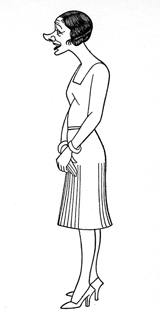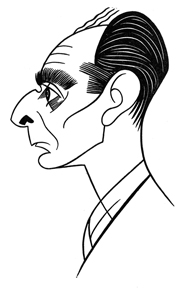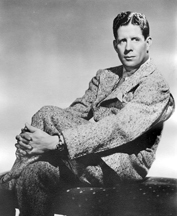In this chapter from his 1932 book, Times Square Tintypes, Broadway columnist Sidney Skolsky profiles actress Gertrude Lawrence.
MEET MISS LAWRENCE
The Woman Of It. GERTRUDE LAWRENCE.
Although fond of flowers and has plenty about the house she will never wear any.
Her father was a singer with a company of touring English minstrels. Her mother acted with the troupe. As a baby she was left in a clothes basket in the dressing room while they were onstage. At the age of four she sold programs in the theaters. Made her stage début when she was six, playing kid parts in England, Scotland and Ireland. Had cards printed reading: “Miss Gertie Lawrence, Child Actress and Toe-Dancer.”
Has a small beauty mark, difficult to see, on the right side of her chin.
Is a good tennis player and an excellent swimmer. In the summer she goes to the beach, in a very business-like way, to acquire a heavy coat of tan.
She avoids wearing a hat whenever possible. Loathes clothes except when she has to dress up. At home she walks about attired in pajamas. When retiring for the evening she dons a nightgown.
Her most expensive habit is buying automobiles. She owns three.
Has a mania for clocks. Has twelve in her apartment. No two of them ever register the same time.
She first set foot in this country on Christmas eve, 1923, when the company of the first Charlot Revue arrived here. No one was present to greet her. She and Beatrice Lillie sat on their trunks on that lonely dock for an hour. They cried and sang Christmas carols.
When talking to a person who uses an accent, she can’t help mimicking that person in conversation.
Her choice selections in foods are beef stew, kidney pudding, fruits out of season, greasy potato chips and ripe olives soaked in garlic. Buys things from pushcarts, like roasted chestnuts, and eats them while walking along the street.
Wears horn-rimmed glasses when she reads or wants to look dignified.
In Candle Light she played her first straight rôle in this country. In London she played the lead in Icebound. Over there she is also noted for her male impersonations.
She goes to fortune tellers and reads dream books, believing in them implicitly.
Her nicknames are “Squirrel,” “Peaches” (this one annoys her), “G” and “Dormouse.”
Lindbergh is her hero. In her press book, which contains every story and picture of her that ever appeared, she also has pasted the newspaper accounts of Lindbergh’s flight, reception and marriage.
Her two favorite games are poker and backgammon. She attends every prize fight, bicycle race and ice hockey game that she can.
Likes to talk in a husky voice and welcomes a slight cold because it enables her to do this.
She can fix a fuse, if one blows out, or repair mechanical troubles. For years she had a tiny French telephone, the type banned by the telephone company. Wherever she traveled, London, Paris, New York, she took it with her and installed it herself.
Prefers definite shades of color in her clothes. She looks best in either black or white.
She is most comfortable when sitting on the floor—and generally does.
Of all her songs, her favorite is “Watch Over Me,” from Oh, Kay. She takes a singing lesson every day and is now learning to sing in Italian.
Her secret ambition is to write a play. Every week she decides to become something else. Now she wants to be a sculptress. She bought some modeling clay, a smock, a book on how to make models life size in twelve easy lessons, and is now trying to do things.




